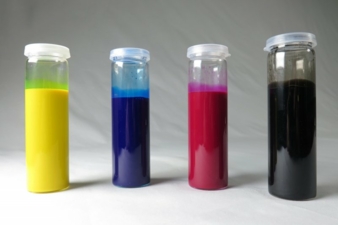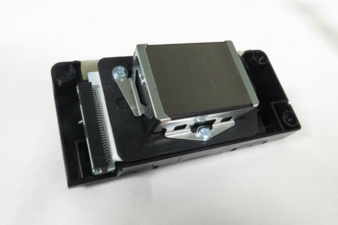03/07/2018 – DITF — auf Deutsch lesen
Colourfast printing with pigment inks
The quality of digital textile printing is determined by the combination of chemicals used in the process.
But meeting and reconciling requirements such as outstanding edge sharpness, good colourfastness and a soft handle is no easy matter. The German Institutes of Textile and Fibre Research (DITF) in Denkendorf have taken up the challenge and developed a chemical-based fabric pretreatment for use in inkjet printing.
It is true that a wide range of bonding agents and pretreatment chemicals is already available on the market with the capacity to modify the surface of the textile carrier material and improve it in preparation for inkjet printing. Given the large number of chemical additives available, however, each with its own particular mode of action, it has been difficult to improve the results of digital printing significantly.
By screening the chemicals in question, it was possible to identify the agents that would be especially suitable. The next stage was to optimise these chemicals for use as pretreatments in inkjet printing by adjusting both the concentration and the proportions of the individual components in the mixture. Adjusting the flow properties of the chemical substances was of particular importance in this respect, to ensure that their viscosity was neither too low nor too high to be applied to the textiles.
The next step required process parameters to be set for the application of the pretreatment chemicals. The quantity of chemicals applied, the method of application and the adjustment of interim drying intervals – all of these process steps ultimately have an effect on the print result. Different optimisations were required for the various application processes such as Foulard, screen printing and inkjet. The pigment inks used as part of the research project were developed by the DITF itself.
Fine-particle pigment dispersions were produced from organic colour pigments. The addition of bonding agents ensures that the pigments adhere well to the textile substrate, while other properties of the pigment inks, such as their hygroscopic and rheological properties, are adjusted by means of additives.
When used with the selected pretreatment chemicals, the pigment inks produce outstanding print results. Test prints on cotton substrates showed excellent contouring, colourfastness and strong colour intensity.





